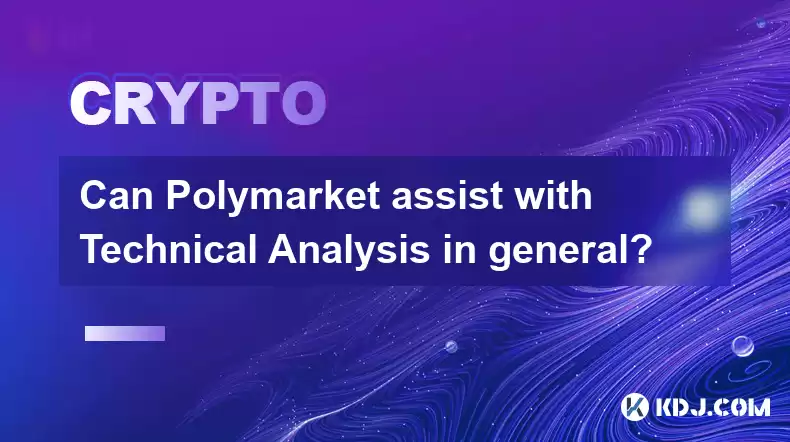-
 Bitcoin
Bitcoin $119000
2.02% -
 Ethereum
Ethereum $4233
-0.58% -
 XRP
XRP $3.182
-1.09% -
 Tether USDt
Tether USDt $1.000
-0.01% -
 BNB
BNB $804.0
0.52% -
 Solana
Solana $183.2
1.27% -
 USDC
USDC $0.9998
0.00% -
 Dogecoin
Dogecoin $0.2335
-2.82% -
 TRON
TRON $0.3384
0.95% -
 Cardano
Cardano $0.8003
-0.61% -
 Hyperliquid
Hyperliquid $45.12
1.98% -
 Chainlink
Chainlink $22.14
3.65% -
 Stellar
Stellar $0.4440
-0.46% -
 Sui
Sui $3.858
-1.36% -
 Bitcoin Cash
Bitcoin Cash $569.6
-0.25% -
 Hedera
Hedera $0.2578
-2.58% -
 Ethena USDe
Ethena USDe $1.001
-0.03% -
 Avalanche
Avalanche $23.76
-3.06% -
 Litecoin
Litecoin $123.7
2.27% -
 Toncoin
Toncoin $3.337
-1.91% -
 UNUS SED LEO
UNUS SED LEO $9.051
0.54% -
 Shiba Inu
Shiba Inu $0.00001355
-1.80% -
 Uniswap
Uniswap $10.90
-0.84% -
 Polkadot
Polkadot $4.047
-1.93% -
 Dai
Dai $1.000
0.00% -
 Cronos
Cronos $0.1628
3.51% -
 Ethena
Ethena $0.7833
5.35% -
 Bitget Token
Bitget Token $4.447
-1.73% -
 Pepe
Pepe $0.00001201
-3.46% -
 Monero
Monero $268.2
-3.37%
Can Polymarket assist with Technical Analysis in general?
Polymarket's market sentiment, support and resistance level identification, and trading signal generation capabilities can aid technical analysts in making informed trading decisions.
Feb 06, 2025 at 04:48 am

Key Points:
- What is Polymarket?
- How Polymarket can assist with Technical Analysis
- Limitations of Polymarket for Technical Analysis
- Step-by-step guide to using Polymarket for Technical Analysis
- FAQs related to Polymarket and Technical Analysis
What is Polymarket?
Polymarket is a prediction market platform that allows users to trade on the outcome of future events. These events can range from political elections to economic indicators to the performance of specific assets like stocks or cryptocurrencies.
How Polymarket can assist with Technical Analysis
Polymarket can assist with Technical Analysis by providing traders with:
- Market sentiment: Polymarket allows traders to gauge market sentiment by observing the prices of prediction markets related to a particular asset. If the price of a prediction that the asset will go up is higher than the price of a prediction that it will go down, this indicates bullish sentiment.
- Support and resistance levels: Polymarket can also be used to identify support and resistance levels. Support levels are prices below which an asset is unlikely to fall, while resistance levels are prices above which an asset is unlikely to rise. Traders can use Polymarket to identify these levels by observing the prices of prediction markets related to the asset at different price points.
- Trading signals: Polymarket can be used to generate trading signals by observing the prices of prediction markets related to a particular asset over time. If the price of a prediction that the asset will go up is moving higher, this could be a signal to buy the asset. Alternatively, if the price of a prediction that the asset will go down is moving higher, this could be a signal to sell the asset.
Limitations of Polymarket for Technical Analysis
While Polymarket can be a useful tool for Technical Analysis, it is important to be aware of its limitations. These limitations include:
- Limited data: Polymarket only covers a limited number of assets, and the data available for each asset may be limited. This can make it difficult to use Polymarket for Technical Analysis on less popular assets.
- High fees: Polymarket charges fees on all trades, which can make it expensive to use for frequent trading.
- Time lag: Polymarket data can lag behind real-time market data, which can make it less useful for short-term trading.
Step-by-step guide to using Polymarket for Technical Analysis
- Create a Polymarket account: You can create a Polymarket account by visiting the Polymarket website and clicking on the "Sign Up" button.
- Deposit funds into your account: You can deposit funds into your Polymarket account using a variety of methods, including bank transfer, credit card, and cryptocurrency.
- Find the prediction market you want to trade: Polymarket has a variety of prediction markets available, covering a wide range of assets and events. To find the prediction market you want to trade, use the search bar at the top of the page.
- Review the market information: Once you have found the prediction market you want to trade, take some time to review the market information. This information includes the market price, the number of shares available, and the market's history.
- Place your trade: To place a trade, simply click on the "Buy" or "Sell" button and enter the number of shares you want to trade.
- Monitor your trade: Once you have placed your trade, you can monitor it by clicking on the "My Trades" tab. This tab will show you the status of your trade, as well as the profit or loss you have made.
FAQs related to Polymarket and Technical Analysis
What are the fees for trading on Polymarket?
- Polymarket charges a 0.5% fee on all trades.
Is Polymarket available in all countries?
- Polymarket is not available in all countries. To see a list of countries where Polymarket is available, please visit the Polymarket website.
How do I withdraw funds from my Polymarket account?
- To withdraw funds from your Polymarket account, click on the "Withdraw" tab and enter the amount you want to withdraw.
Disclaimer:info@kdj.com
The information provided is not trading advice. kdj.com does not assume any responsibility for any investments made based on the information provided in this article. Cryptocurrencies are highly volatile and it is highly recommended that you invest with caution after thorough research!
If you believe that the content used on this website infringes your copyright, please contact us immediately (info@kdj.com) and we will delete it promptly.
- KiwiSavers, Crypto Returns, and Digital Investment: Are Kiwis Missing Out?
- 2025-08-11 06:30:11
- Ruvi AI's Sales Surge: Could It Outpace Tron in the Crypto Race?
- 2025-08-11 06:30:11
- Meme Coin Mania: Is Shiba Inu Out and Little Pepe In?
- 2025-08-11 06:50:12
- Bitcoin Casino Weekly Challenge: Hitting the Jackpot in Crypto Gaming
- 2025-08-11 06:50:12
- Cardano (ADA): Riding the Bull Cycle Wave to New Heights?
- 2025-08-11 07:10:12
- Bitcoin Institutional Holdings in 2025: A Bullish Outlook
- 2025-08-11 07:15:19
Related knowledge

What is Ethereum’s Slashing mechanism and how to punish malicious behavior?
Feb 20,2025 at 03:08am
Key PointsOverview of slashingDifferent types of slashing in EthereumIncentives and consequences of slashingIdentifying and reporting slashed validato...

What is the verifier node of Ethereum and how to become a verifier?
Feb 19,2025 at 06:00pm
The Verifier Node of Ethereum: A Comprehensive GuideKey Points:What is a Verifier Node?How to Become a Verifier NodeResponsibilities and Rewards of a ...

What is Ethereum’s staking, and how to participate and earn money?
Feb 19,2025 at 04:37pm
Key Points:Understanding Ethereum's Staking MechanismSteps to Participate in StakingBenefits and Rewards of StakingSecurity and Risk ConsiderationsTec...

What is Ethereum’s DAO (Decentralized Autonomous Organization) and how does it work?
Feb 20,2025 at 03:12am
Key PointsDefinition and Structure of a DAOGovernance and Decision-Making in DAOsBenefits and Use Cases of DAOsChallenges and Limitations of DAOsWhat ...

What is Ethereum's multi-signature wallet and how to improve security?
Feb 20,2025 at 02:18pm
Key Points:Understanding the Concept of a Multi-Signature WalletBenefits and Drawbacks of Multisig WalletsRequirements for Setting Up a Multisig Walle...

What is Ethereum's oracle and how to provide data for smart contracts?
Feb 21,2025 at 01:30am
Key Points:Understanding the concept of oracles in EthereumExploring different types of oraclesDetailed guide on how to provide data for smart contrac...

What is Ethereum’s Slashing mechanism and how to punish malicious behavior?
Feb 20,2025 at 03:08am
Key PointsOverview of slashingDifferent types of slashing in EthereumIncentives and consequences of slashingIdentifying and reporting slashed validato...

What is the verifier node of Ethereum and how to become a verifier?
Feb 19,2025 at 06:00pm
The Verifier Node of Ethereum: A Comprehensive GuideKey Points:What is a Verifier Node?How to Become a Verifier NodeResponsibilities and Rewards of a ...

What is Ethereum’s staking, and how to participate and earn money?
Feb 19,2025 at 04:37pm
Key Points:Understanding Ethereum's Staking MechanismSteps to Participate in StakingBenefits and Rewards of StakingSecurity and Risk ConsiderationsTec...

What is Ethereum’s DAO (Decentralized Autonomous Organization) and how does it work?
Feb 20,2025 at 03:12am
Key PointsDefinition and Structure of a DAOGovernance and Decision-Making in DAOsBenefits and Use Cases of DAOsChallenges and Limitations of DAOsWhat ...

What is Ethereum's multi-signature wallet and how to improve security?
Feb 20,2025 at 02:18pm
Key Points:Understanding the Concept of a Multi-Signature WalletBenefits and Drawbacks of Multisig WalletsRequirements for Setting Up a Multisig Walle...

What is Ethereum's oracle and how to provide data for smart contracts?
Feb 21,2025 at 01:30am
Key Points:Understanding the concept of oracles in EthereumExploring different types of oraclesDetailed guide on how to provide data for smart contrac...
See all articles

























































































